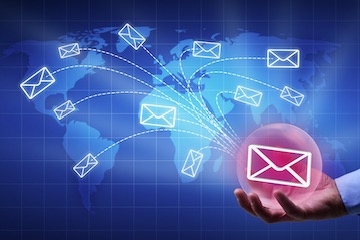Success in email marketing for ecommerce companies depends on a few prerequisites.
First, an email marketer needs a database of subscribers with low bounce and unsubscribe rates and the ability to segment based on key attributes, such as prospects, customers, products purchased, and order dates.
A marketer also needs to generate new subscribers. Offering special promotions to entice newsletter signups is a typical method for merchants.
Finally, a marketing automation tool is essential. Many email service providers offer automation features, as do enterprise automation platforms.
Finally, a marketing automation tool is essential.
What follows are common automated email campaigns for ecommerce companies. Once you identify the campaigns that drive sales for your company, work on improving results by testing, such as the day and time of deployment, subject lines, content, and the frequency.
Automation Examples
- Welcome email. Sent to new subscribers, a welcome message is usually a single email, but a follow-up can be effective to subscribers who have not used their signup incentives.
- Post-purchase emails. Send a single receipt email immediately after a purchase, to confirm. Then send another when the order has been shipped. Some companies send a third email after the customer received the shipment, requesting a review or feedback. Customer feedback is essential to gauge satisfaction and generate ideas for new products. Consider including a coupon or discount in the final email, for the next purchase.
- Abandoned cart emails can go beyond reminding users of what they left behind. They can also include reasons why users need the products. Some will simply offer a discount to complete the purchase. The timing of abandoned cart emails varies, from immediately after a user leaves the site to 24 hours later. I’ve seen merchants send up to three automated emails in an attempt to recover the sale. Track conversion and unsubscribe rates to find a message and frequency that works for your company.
- Reengagement emails. Most established businesses have a high percentage of subscribers who have not opened an email in the last six months. There are many tactics to reengage those subscribers, such as aggressive discounts, reminders of why they signed up, or even threatening to remove their addresses from your list. Regardless, measure responses and keep tweaking and trying. You never know when someone will change their mind about your brand.
- Loyalty emails are for your best customers, those that purchase frequently with larger average order amounts. For those buyers, send a series of emails with special incentives and discounts. Thank them for their loyalty. But don’t overdo it. If opens decrease or unsubscribes increase, ratchet down the frequency.
Segmentation
Segmentation is essential to email automation, and not just for targeting. It also avoids sending too many emails. For example, if you send a general email every week to your entire database, do not deploy loyalty emails on the same day. The latter could annoy your best customers and end up in a spam filter, too.
Carefully plan your strategy. Testing is a must. Remove duplicates, and avoid having the same subscriber fall in two or more segments.







